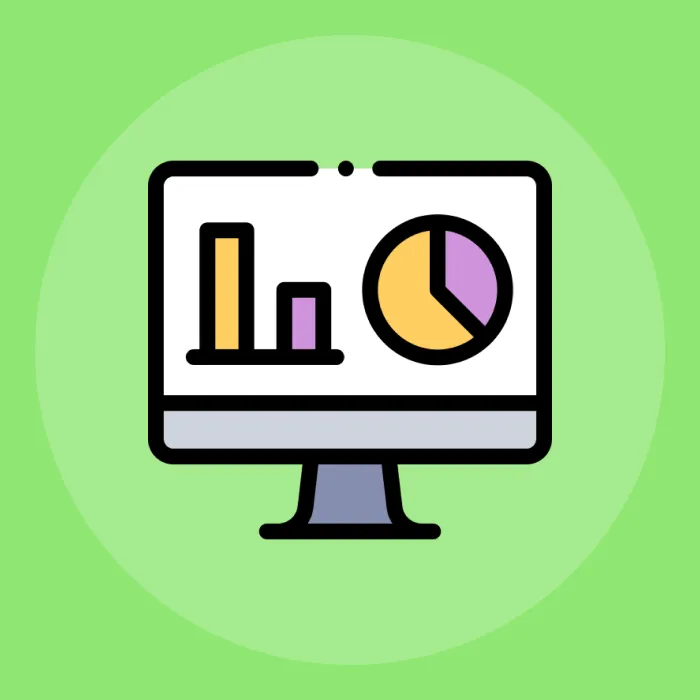What is Power Query and its connection to Data Analysis Expression (DAX)?
Data analysts nowadays use numerous tools and software to analyze datasets and make assumptions based on the conclusions. Power Query and Data Analysis Expressions are the most commonly used tools.
Both these tools have provided significant benefits to analysts due to their user-friendliness and high accuracy level. Most of the time, analysts use these tools due to Power BI - an application for analysts to store their datasets, conduct statistical tests, and make assumptions.
Using Power Query, users can make multiple edits to the datasets and their tables. So, Power BI creating a table based on another table has become helpful in cleaning out datasets and conducting new tests.
In other words, there might be occasions where an analyst wishes to perform specific tests without outliers in the dataset, but does not wish to delete the original one. To accomplish this, analysts can create new tables based on existing ones and remove outliers, which will enable them to obtain accurate results.
On the other hand, Data Analysis Expressions, also known as DAX, are used in Power BI, which allows analysts to aggregate their data and perform calculations. Yet, utilizing DAX necessitates sorting datasets into tables, making the combination of Power Query and DAX advantageous.
What is Data Analysis Expression (DAX)?
Data Analysis Expression is a programming language that many use when working with Power BI. Understanding Data Analysis Expression. People can understand and analyze their data more efficiently and clearly.
In other words, by using the Data Analysis Expression programming language, users can gain a deeper understanding of different data models, conduct more complex calculations on the data, obtain various types of calculations, and draw more informed conclusions.
However, there are also other benefits of using this programming language. For instance, not many data programming languages provide users with the flexibility of custom calculations within their tool. By using DAX, analysts can create custom calculations tailored to their needs.
On the other hand, by using DAX, users can do time-based calculations. To provide further insight, DAX enables the use of time-based data series, a relatively uncommon feature in many data programming languages.
Additionally, many businesses now employ Data Analysis Expressions (DAX) for data analysis, leveraging its integration of business logic concepts within the programming language. In other words, many businesses utilize DAX to analyze their sales, marketing campaigns, profits, conversion rates, and other key metrics essential to understanding a business's success.
Thus, by using DAX and connecting it to Power BI, companies and users will gain better insights into their operations and understand which fields they lack and which need to be better monitored and addressed.
What are the advantages of using Power BI?
As mentioned above, Power BI has become one of the most powerful data visualization tools for analysts. Numerous companies have begun using Power BI and Embed Power BI reports into their operations, reaping innumerable advantages.
One of the advantages of Power BI is the reduction in unnecessary steps that analysts previously had to perform manually. For instance, before Power BI, many analysts had to manually input datasets into tools, which was time-consuming.
However, with the introduction of Power BI, these employees have been able to dedicate more of their time to the more vital steps of the data visualization process.
On the other hand, Power BI has increased productivity and collaboration among employees within an organization, as it provides a shared space where employees can work on projects simultaneously.
Plus, Power BI has provided its users with a platform that is easy to use. The user-friendliness of the tool has made working with the tool more enjoyable and comfortable for employees.
Additionally, this user-friendliness feature has increased positive feedback from users, as many employees are prone to change in their working processes. The user-friendliness has made the change more bearable for them.
Thus, by integrating Power BI, companies will be able to provide a user-friendly platform for their users. Lastly, Power BI allows users to use the tool on any electronic device, regardless of screen size.
In other words, employees can work on their projects in emergencies on their mobile devices when no other electronic device is available, making the tool scalable compared to others.
What is Data Transformation?
Data Transformation is when analysts are required to review a sample of data to remove unnecessary information for their calculations. For instance, imagine having a large dataset that has numerous coefficients that have a significant impact on the profits of a product.
To understand which gender has been most interested in the development, analysts must calculate the relationship between male profits and female profits since the dataset provides numerous other factors, such as the purchase date, marketing conversion rates, customer satisfaction, number of returns, etc.
Analysts will be required to transform the data to obtain the outcomes of the relationship they wish to achieve - in this case, only having gender as a dependent variable in the equation. On the other hand, data transformation also consists of changing the format of a specific dataset.
Numerous companies operate globally, which implies that they will record a portion of their sales and profits in currencies other than their local currency. For example, a company headquartered in the USA sells its products in the United Kingdom and Europe, which implies that it will record its profits in US Dollars (USD), euros (EUR), and British pounds (GBP).
Considering that businesses incur costs in USD, the company will need to obtain its revenue information in USD to compare the cost of goods sold (COGS) with its revenue in the same currency. To accomplish this, it is essential to change the data format and turn all of them into USD currency to complete the comparison.
Transforming data is one of the most frequently used features by data analysts, as it provides numerous benefits when calculating statistical measures, creating hypotheses, and drawing accurate conclusions.
Here are some of the steps where both Power BI and Data Analyst Expressions are used to quicken the process of data transformation:
Steps to Master Power Query and DAX for Data Transformation
Educating employees on how each feature operates and functions is essential for utilizing the best features offered in Power BI. Here are some things to consider when using Power Query and DAX:
1- Understand how Power Query works in Power BI
Power Query's core objective involves collecting datasets from diverse data sources and applying edits and transformations after importing them into the tool.
2- Load Data into Data Transformation in Power BI
After loading the datasets and combining them in Power BI, the Power Query method enables users to edit and remove any unnecessary data that is irrelevant to the data analysis.
Now that the dataset is complete, the analysis can be transformed into Power BI to conduct statistical tests using various methods, one of which is the DAX method.
3- Understand DAX functions and fundamentals
Knowing the functions needed during the process is vital to using the DAX method. Some of the basic ones are the following:
SUM
AVERAGE
IF
SWITCH
TOTALYTD
Numerous other DAX functions can make the analyst's job easier. Thus, having all tasks written and stored in a document is crucial for making them easier to access.
4- Search for DAX techniques
On the other hand, numerous analysts share various techniques on social platforms related to the DAX method. Hence, stay updated by following social media, where people share their strategies.
5- Combine Power Query and DAX
Now that you know how Power Query and DAX work, it is time to combine both tools and conduct real analysis. For instance, an analyst can use DAX on the tables they previously created using Power Query to understand a dataset's year-to-year variance, which can help them make critical business decisions.
6- Start exploring real scenarios
After training oneself on the basics of DAX and Power Query, it is time to examine and analyze real-life business scenarios.
Conclusion
To conclude, utilizing Power BI is an essential tool for data analysts, and training and mastering its features can enhance the efficiency of the organization and its employees.








